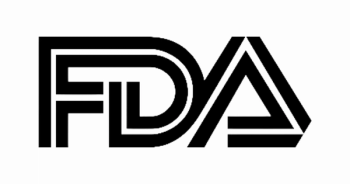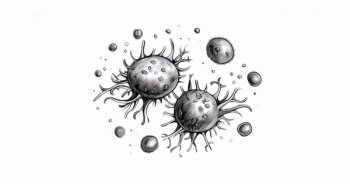
Datopotamab Deruxtecan Shows Promise in Advanced Urothelial Cancer
Datopotamab deruxtecan showed promising activity in advanced urothelial cancer in a phase 1 study.
Updated findings from the phase 1 TROPION-PanTumor01 study (NCT03401385), presented at the 2025 ASCO Genitourinary Cancer Symposium, showed that datopotamab deruxtecan-dlnk (Datroway) demonstrated promising clinical activity in patients with heavily pretreated locally advanced or metastatic urothelial cancer.1
Based on blinded independent central review (BICR), the objective response rate (ORR) with dato-DXd was 25.0% (n = 10/40; 95% CI, 12.7%-41.2%), which included 1 complete response (CR; 2.5%) and 9 partial responses (PRs; 22.5%). Additionally, the disease control rate (DCR) was 77.5% (n = 31/40; 95% CI, 61.5%-89.2%), and the median duration of response (DOR) was not estimable (NE; 95% CI, 2.6 months to NE).
Responses were ongoing at 6 months among 76.2% (95% CI, 33.2%-93.5%) of responders. The investigator-assessed ORR was 30.0% (n = 12), which consisted entirely of PRs.
Data showed a median progression-free survival (PFS) of 6.9 months (95% CI, 2.9-NE).
“TROPION-PanTumor01 demonstrated that dato-DXd has encouraging activity in this heavily pretreated patient population,” lead study author Funda Meric-Bernstam, MD, chair of the Department of Investigational Cancer Therapeutics (Phase 1 Program) at The University of Texas MD Anderson Cancer Center, stated in a presentation on these findings.1 “The safety profile [of dato-DXd] was consistent with previous studies. These findings suggest the need for continued development of dato-DXd in the current phase 2 TROPION-PanTumor03 study [NCT05489211].”
In the open-label phase 2 TROPION-PanTumor03 study, investigators will evaluate the safety and efficacy of dato-DXd when administered alone or in combination with other agents across various advanced solid tumor populations.2 Patients 18 years and older with a documented advanced or metastatic malignancy, an ECOG performance status of 0 or 1, adequate bone marrow reserve and organ function, and a life expectancy of at least 12 weeks are eligible for enrollment on the study.
Investigators of the ongoing multi-cohort, open-label phase 1 TROPION-PanTumor01 study are evaluating treatment with dato-DXd among patients with several types of previously treated advanced solid tumors, including urothelial cancer. In the urothelial cancer cohort, 40 patients were assigned to receive dato-DXd at 6 mg/kg once every 3 weeks.
The primary end point is safety and tolerability. Secondary end points include ORR, DOR, DCR, and PFS.
Patients with unresectable locally advanced or metastatic urothelial carcinoma of the renal pelvis, ureter, urinary bladder, or urethra were eligible for enrollment in this study cohort. Other eligibility criteria included having prior treatment with more than 1 line of therapy including an immune checkpoint inhibitor, an ECOG performance status of 0 or 1, being unselected for TROP2 expression, and having no prior therapy with DXd-targeting antibody drug conjugates or anti-TROP2 agents.
The median patient age was 66.5 years (range, 44-83), and most patients were male (78%). Additionally, most of the cohort had an ECOG performance status of 1 (53%), stage IV disease (83%), and 3 or more prior lines of treatment (60%). The most common types of prior systemic therapy in any setting included immunotherapy (100%), platinum-containing chemotherapy (90%), and enfortumab vedotin-ejfv (Padcev; 83%).
Any-grade and grade 3 or higher treatment-emergent adverse effects (TEAEs) occurred in 98% and 55% of patients, respectively, with serious TEAEs reported in 43% and 40%. TEAEs associated with dose reduction, dose delay, and treatment discontinuation occurred in 20%, 35%, and 8% of patients, respectively. There were 2 TEAEs resulting in death; none of these deaths were related to dato-DXd.
Most treatment-related AEs (TRAEs) were grade 1 and included stomatitis (28%), nausea (28%), decreased appetite (23%), alopecia (18%), and fatigue (13%). Investigators observed no instances of neuropathy and highlighted 1 event of grade 2 anemia.
Regarding AEs of special interest, oral mucositis or stomatitis occurred in 55% of the cohort, which included grade 1 (28%), grade 2 (23%), and grade 3 instances (5%). Ocular surface events were reported in 18%, which consisted of grade 1 (10%) and grade 2 events (8%). Additionally, adjudicated drug-related interstitial lung disease affected 2 patients (5%), with 1 instance each at grade 2 (3%) and grade 3 (3%).
References
Meric-Bernstam F, Alhalabi O, Lisberg A, et al. Datopotamab deruxtecan (Dato-DXd) in locally advanced/metastatic urothelial cancer: updated results from the phase 1 TROPIONPanTumor01 study. J Clin Oncol. 2025;43(suppl 5):663. doi:10.1200/JCO.2025.43.5_suppl.663
Study of dato-DXd as monotherapy and in combination with anti-cancer agents in patients with advanced solid tumours (TROPION-PanTumor03). ClinicalTrials.gov. Updated February 6, 2025. Accessed February 15, 2025. https://tinyurl.com/mpj2h9ud








































